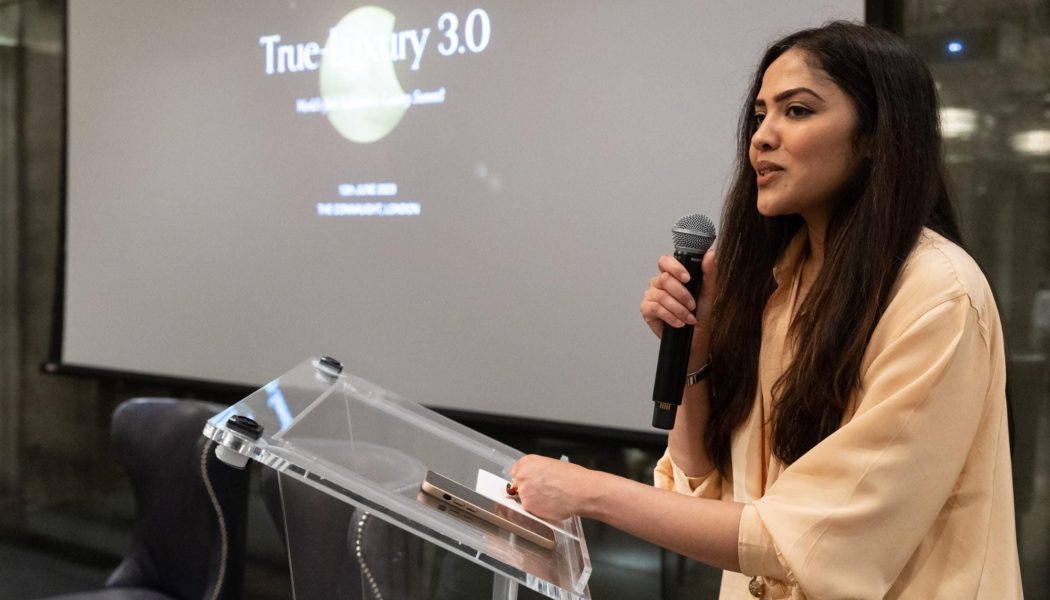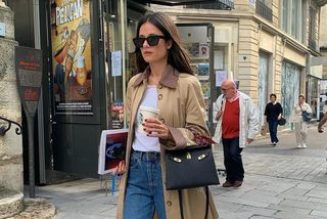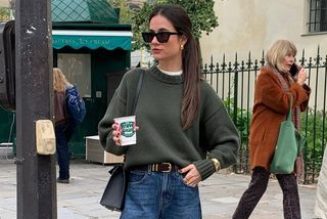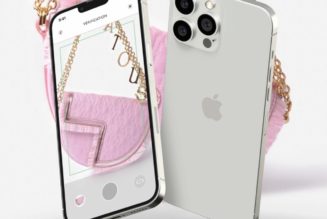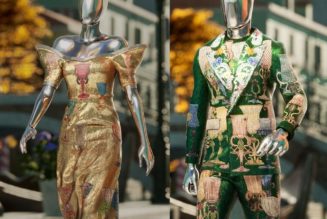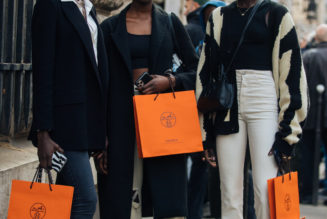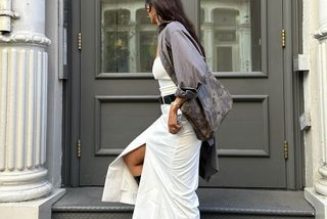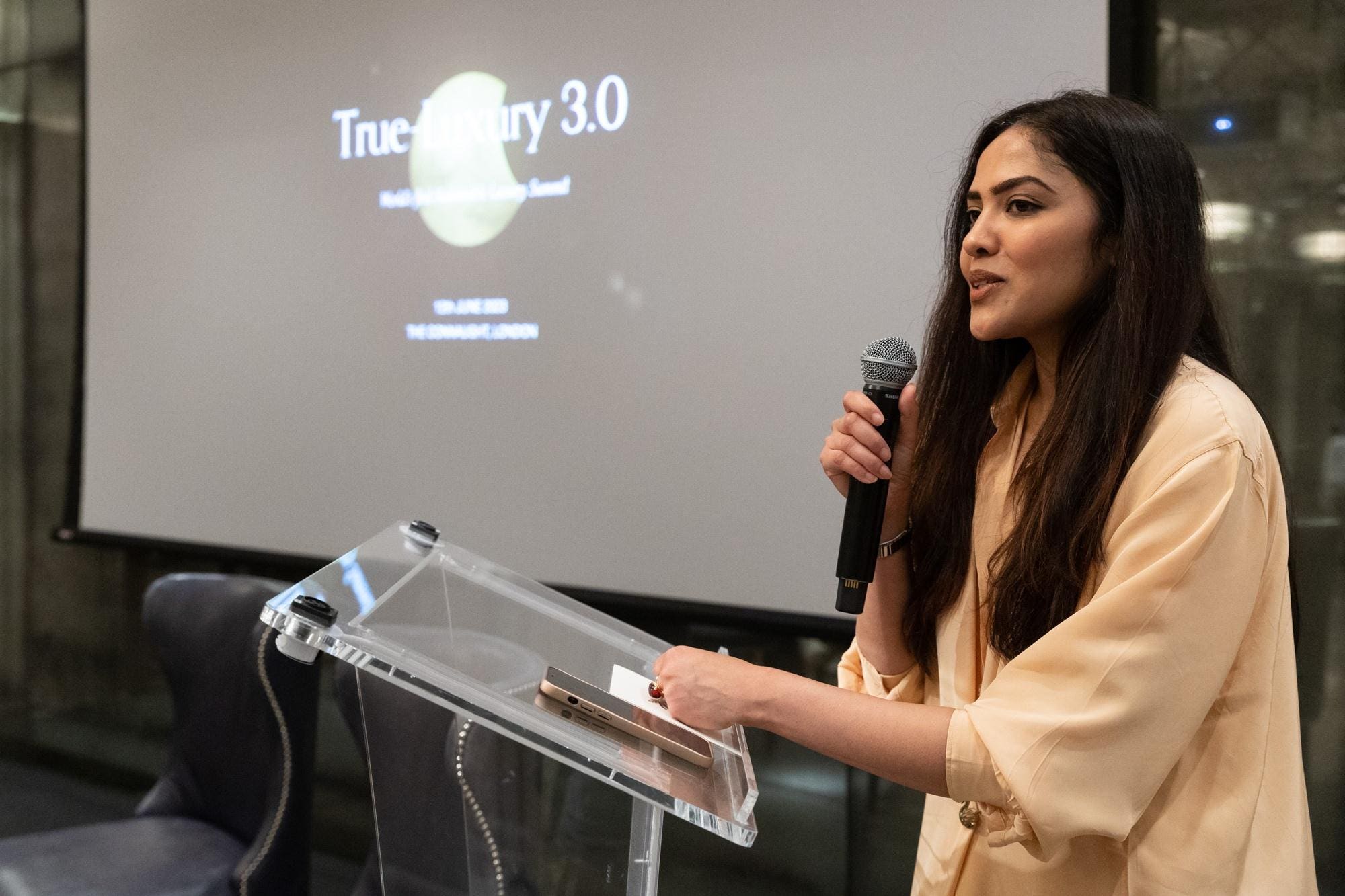
Today was the True-Luxury 3.0 Summit in London, that brought together those in the luxury sector to discuss climate positive practices. In its third edition, fashion, food, hospitality, lifestyle, travel, and technology were the six sectors at the heart of the discussions and networking.
The summit was founded by Laboni Saha, a London-based designer who wanted to create a gathering of those in the luxury sector to discuss ways in which luxury can incentivize customers to make positive changes in their consumerism, that will in turn be better for the planet. “The fashion industry is in a very strong position to influence consumer habits, because similar to food, we all consume fashion, in some form or another. The industry has over the past decades gotten us in the habit of buying based on trends, on seasons, and also based on mark downs,” Saha said before the start of the summit. She’s not naïve to the fact that these positive changes have to make sense for luxury brands. “This has to work in terms of profitability for luxury businesses and for the planet,” she says.
Saha leading a panel with Olga Dogadkina, CEO of Emperia and Fred Spiers, CEO of SKNUPS discussing … [+]
The event was held in central London at The Connaught Hotel. Guests networked before the summit began and then Saha opened with welcoming remarks. “Events like the True-Luxury 3.0 Summit fosters a much-needed discussion around the latest in Web3.0 and virtual retail technology, bringing together top tech solutions and leading retailers, which open these topics into an important exchange of opinions and experience,” Olga Dogadkina, CEO of Emperia says. Emperia is a platform that makes immersive virtual experiences for fashion brands across multiple retail sectors.
Edwina Ehrman, the former Senior Curator for the Victoria & Albert Museum and Mukungwe Marie Leak, … [+]
Six panel discussions on topics from building blocks for a carbon neutral planet, to solutions-oriented innovations, to pro-planet processes rounded out the summit, with the fourth one focusing solely on fashion. Themed ‘Craftsmanship- A Solution to Fashion’s Speed-breaking problem,’ Saha; Mukungwe Marie Leak, Senior Couture Manager for Vivienne Westwood; and Edwina Ehrman, the former Senior Curator for the Victoria & Albert Museum all talked about how consumers are appreciating the craftsmanship of slow fashion more and more.
There has been a shift of consumers shying away from fast fashion with a move towards bespoke and luxury fashion. “There are several reasons for this,” says Ehrman. “Over the past decade or so, fashion houses have become incredibly adept at showing people the skills, time, and care that goes into making their products. They have done this through blockbuster exhibitions with innovative and memorable displays, by establishing their own museums and foundations- and sometimes through film.”
Noting how working with your hands and creating something so unique connects people Ehrman goes on to say that, “making, creating, customizing, and repairing teaches us about the qualities of materials, how to use our hands and manipulate tools. Furthermore, it forges a relationship between us and the object. Similarly, buying a finely crafted garment or accessory whose story we even partially know has an emotional resonance for us, as well a monetary and investment value. Craftsmanship is part of our cultural heritage, of what makes us human and the very best has a contemporary relevance, which will ensure its future,” she says.
Other factors that have led consumers away from fast fashion are global atrocities in the fashion industry. The 2013 Rana Plaza garment factory collapse that killed over a thousand workers and injured more in Bangladesh caught the attention of consumers. And in 2014, Primark factory workers imprisoned in China, hid messages in clothes about the terrible working conditions.
Then, events like the 2008 financial crises that led to people losing their jobs, yet inspired them to start their own businesses selling their crafts on online platforms like Etsy, made an impact. The pandemic also reignited people buying artisanal crafts online through Etsy contributing to the appreciation of craftsmanship and making it mainstream. And, creative directors like Gabriela Hearst of Chloé (as well as her own eponymous brand) and Maria Grazia Chiuri of Dior working closely with global artisans has made the industry and its consumers take note of how important craftsmanship is.
The summit brought out key thought leaders in fashion and the luxury sector.
The pandemic sparked other trends in fashion, in places like the metaverse. Consumers are using virtual stores more than before. Dogadkina explains. “The pandemic definitely accelerated awareness amongst retailers of what immersive, tech-powered e-commerce experiences could do and the role they could play in their sales strategy. We saw this boost demand amongst luxury names early on in the pandemic and the demand has now expanded to high street retailers,” she says.
Main technology players like Meta have entered this virtual world. “The earlier marketing hype, which was a campaign-dependent and a short-lived virtual space has now become a permanent long-term e-commerce solution, which is treated as a ‘flagship virtual store,’ Dogadkina continues. “Retailers are much more experienced with specific roles within those organizations specializing and overseeing the creation and maintenance of these spaces, with the understanding that the virtual store is a completely new experience, different to the physical store environment. This presents a true opportunity to expand the brand’s appeal to the shoppers of the future.”
Rachel Goult, Managing Director of Yacht Carbon Offset talking about a carbon neutral planet.
This isn’t the only event True-Luxury 3.0 is doing this year. Today’s event was an opportunity for discussions on how six sectors of luxury impact central climate issues. “Events like True-Luxury 3.0 are essential forums to bring individuals together so that they can highlight and educate others on the positive action being taken,” says Rachel Goult, Managing Director of Yacht Carbon Offset. “Such forums incentivize individuals to work collaboratively and the collective group often brings around a force for change. By working together, we can make a real difference.”
In September True-Luxury 3.0 will launch an exhibition, which will be co-curated by Ehrman and Saha. “The showcase will be a ‘first of its kind’ experiential display of ‘True-Luxury’- a new genre of luxury heralding a ‘Better for the Planet’ movement,” True-Luxury 3.0 notes. Pro planet innovations, actions, and initiatives by well-known brands, changemakers, and innovators will be at the heart of the exhibition.
